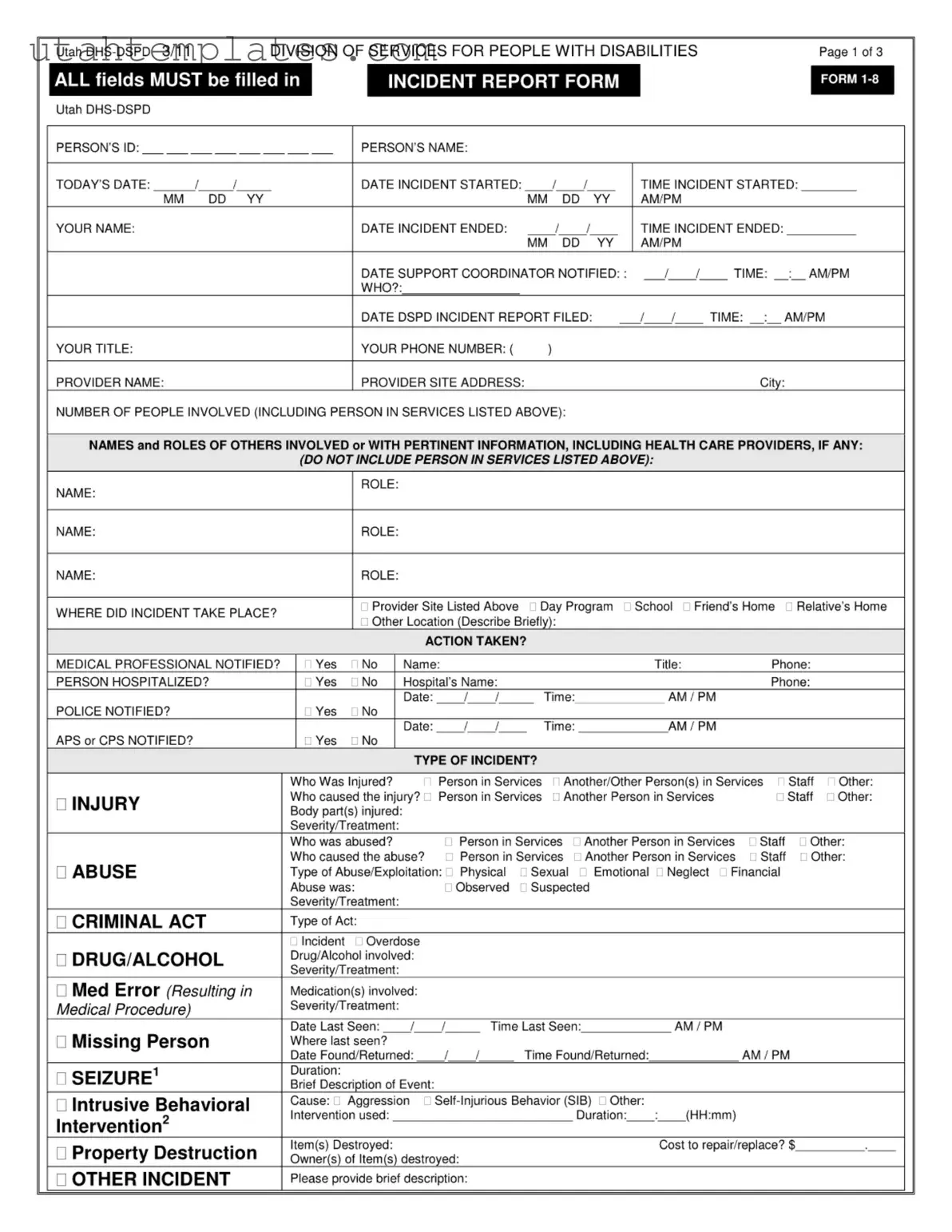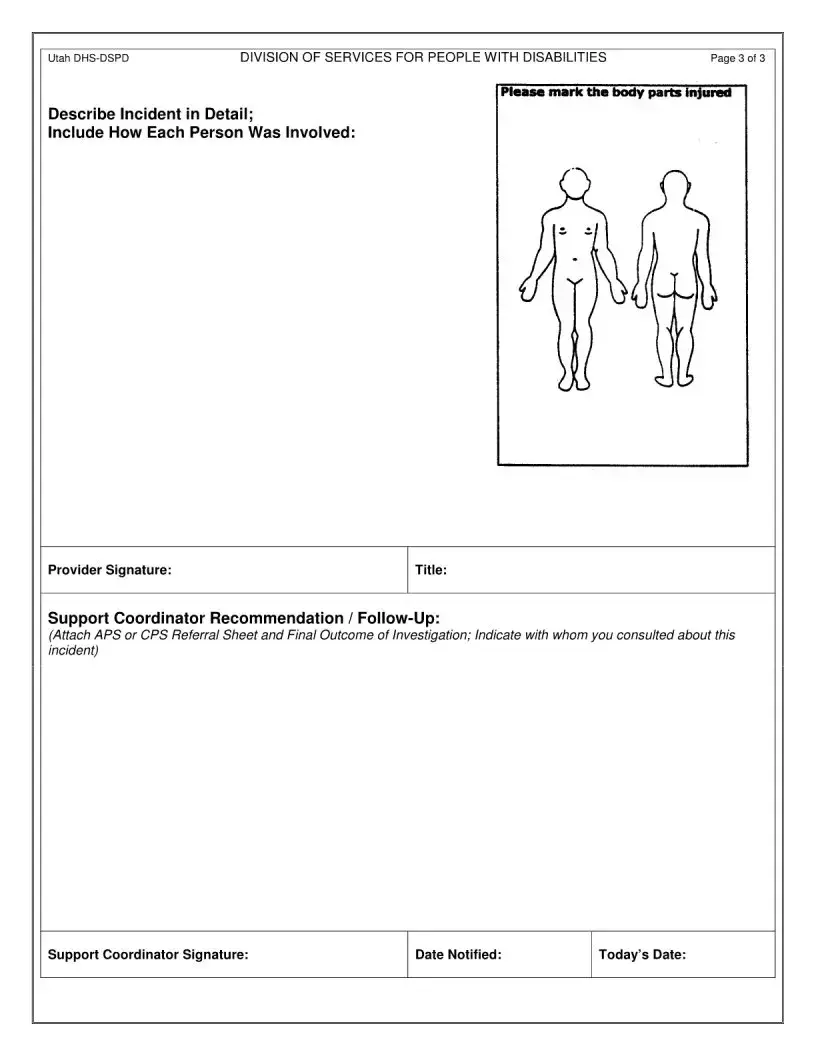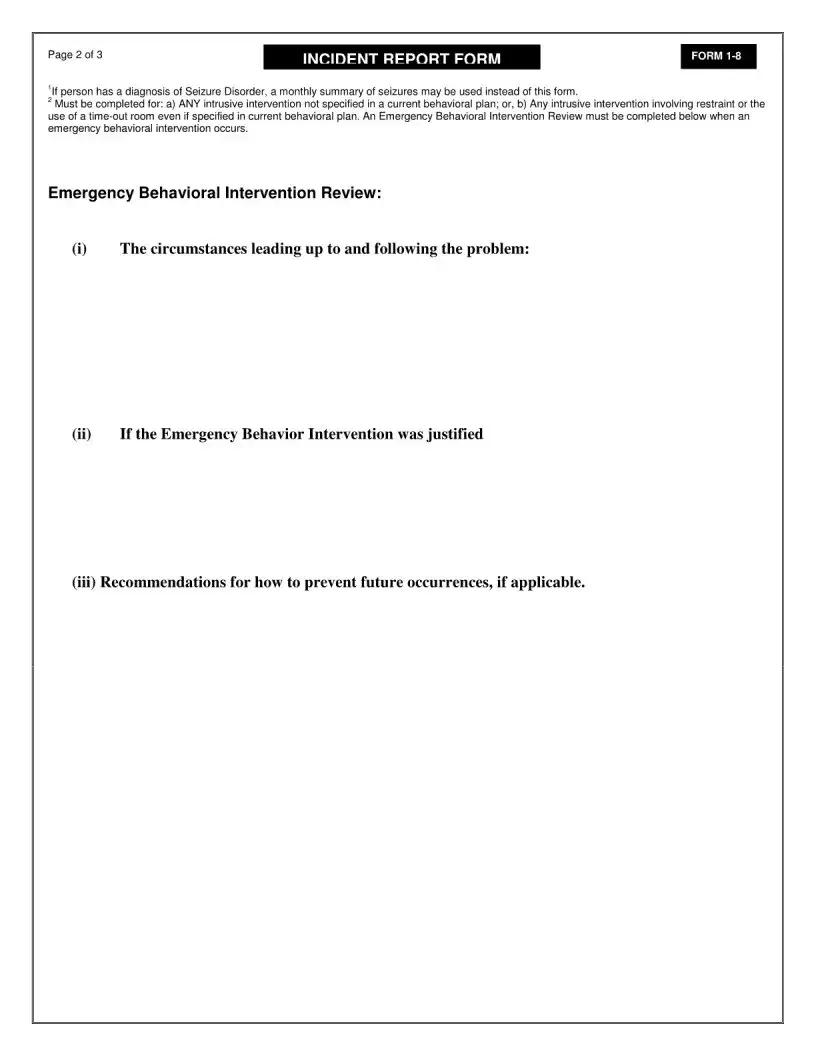The Utah 1 8 form is a critical document used to report incidents involving individuals receiving services from the Division of Services for People with Disabilities (DSPD). This form requires comprehensive details about the incident, including the names and roles of all individuals involved, the location where the incident occurred, and the actions taken in response. It prompts the reporter to document specific information such as the date and time the incident started and ended, the type of incident, and any medical or law enforcement notifications made. Additionally, the form addresses various types of incidents, including injuries, abuse, and behavioral issues, ensuring that all relevant aspects are captured. A thorough description of the event is necessary, along with any interventions used and recommendations for future prevention. The form also includes sections for signatures from the provider and support coordinator, reinforcing accountability and follow-up actions. Proper completion of the Utah 1 8 form is essential for maintaining the safety and well-being of individuals in care, as well as ensuring compliance with state regulations.



